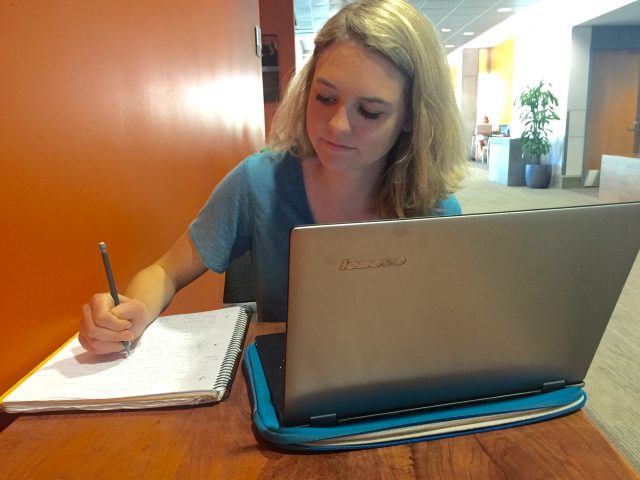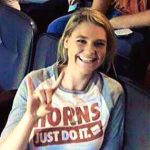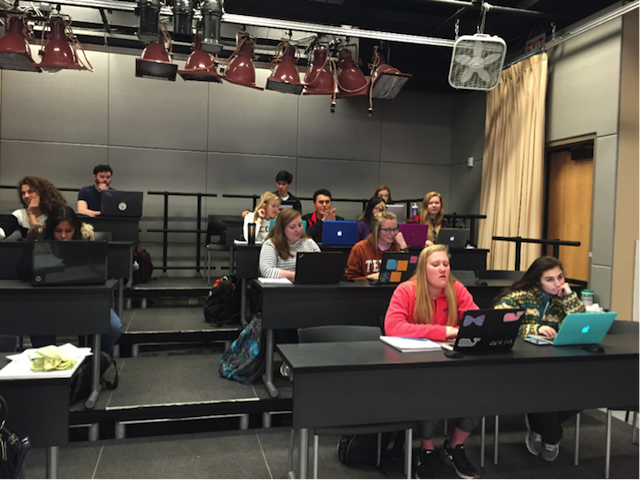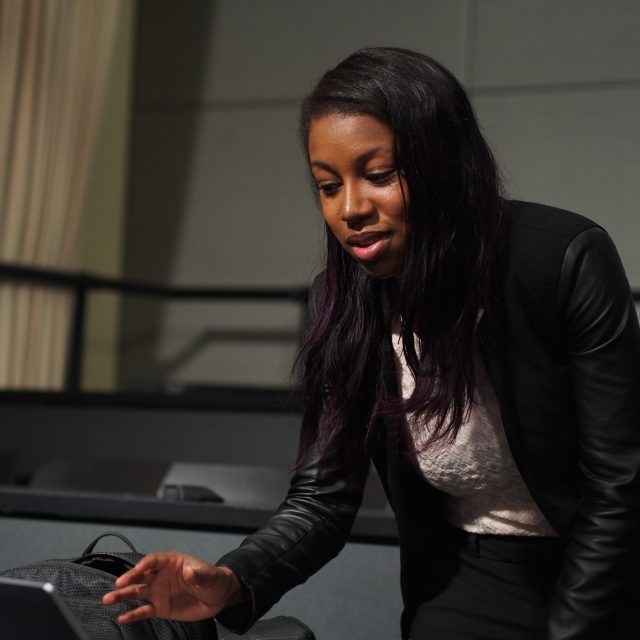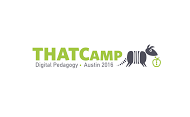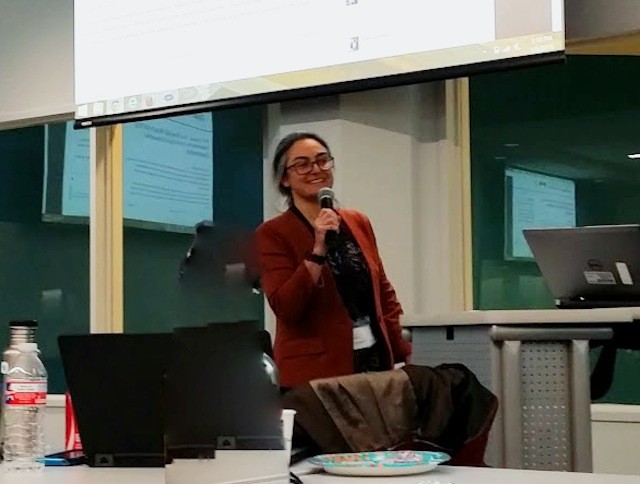By Abigail Griffin
When most college students think of online courses, they often imagine basic, boring classes that are convenient and easy A’s. Online classes often require little effort and minimal time commitment, while still satisfying a graduation requirement. So, students drudge aimlessly through the mandatory course, get their completion grades, and move on with their lives, without actually gaining anything from the experience. Dr. Suri’s online course, however, is so much more than a mark off of an undergraduate’s to-do list. Professor Suri revolutionizes this old, bland style of online coursework and provides a unique and active learning experience to students anywhere—from the comfort of their own beds to a quaint coffee shop down the street to the studio classroom in Mezes.
Going into the course, I was skeptical. Not because I didn’t have full faith in Professor Suri’s ability to make the course the best it could be, but because I was worried that even the best online class could not beat traditional, classroom-style learning. I had been unimpressed by the reputation of online classes in the past, and I never previously had the desire to take one. I always preferred a classroom setting because it just seemed more “right.” But boy, was I wrong.
Not only is Professor Suri an incredibly energetic and knowledgeable professor, but he makes his lectures engaging, informative, and entertaining. The online setting does not take away from the education at all, in fact, I think it enhances the learning environment. Students are more willing to participate in class through applications like “Class Chat” and “Ask the Professor,” and the TA’s and Prof. Suri actively respond to their comments, which would be nearly impossible in a huge lecture hall. When students take an active role in their learning like this, they benefit significantly more from the lecture. I know from experience that there is practically no class participation in a 300-500 person lecture hall, but having the same class size online encourages significantly more student involvement.
For example, Dr. Suri uses images in his lecture every class period, and the pictures pop up on our video screens so we can easily see them. When he asks us to comment on the images, students begin contributing to the discussion in a matter of seconds. In a normal classroom setting with the same number of students, almost no one responds to the professor’s questions, and never that quickly and eagerly. So the online forum actually makes the lecture easier for the students, the professor, and his assistants. It is also wonderful because the slides and images that come up on our screen are clear and easy to understand and interpret, whereas, it would be more difficult for some of the students to evaluate the images in a lecture hall.
Overall, I am incredibly impressed by what Dr. Suri has done with his online course. Obviously, it isn’t perfect. Sometimes the technology doesn’t work correctly or people get off track in the class chat. But as a whole, the class is a lot of fun. I think that the online and in-person office hour options are great, the class pings ensure that students are paying attention (and are super easy participation points), and the lectures are always interesting.
Plus, I have never been a morning person, so it’s great to be able to wake up 5 minutes before class and still make it on time.
Abigail Griffin is a second-year Plan II Honors and Government double-major with a minor in Arabic. She graduated high school in St. Louis and her family currently resides in Elizabethtown, KY. She is an Arabic Flagship and Forty Acres scholar at UT , an Agency Co-Director within Student Government, and a Camp Texas counselor to incoming freshman. Abigail also volunteers as a KIPP tutor and as an AISD tutor to Arabic-speaking students. Additionally, she is passionate about sports and has played on the Women’s Club Soccer team In the future, she intends to pursue a career in foreign service and counterterrorism.
